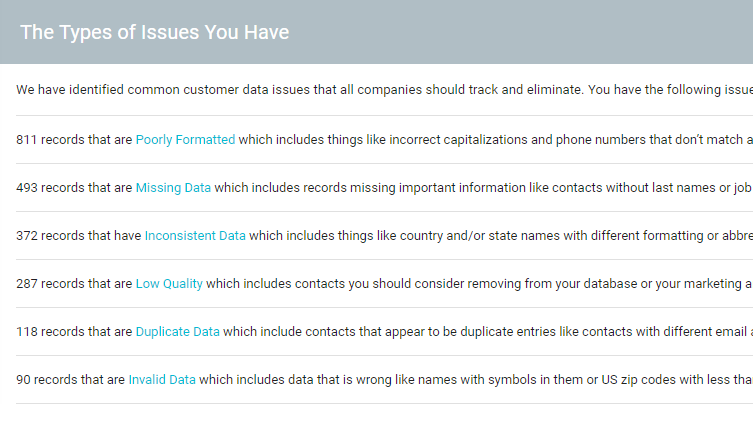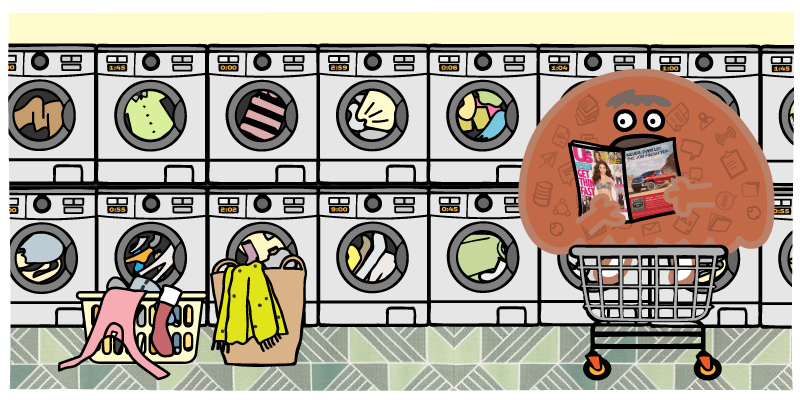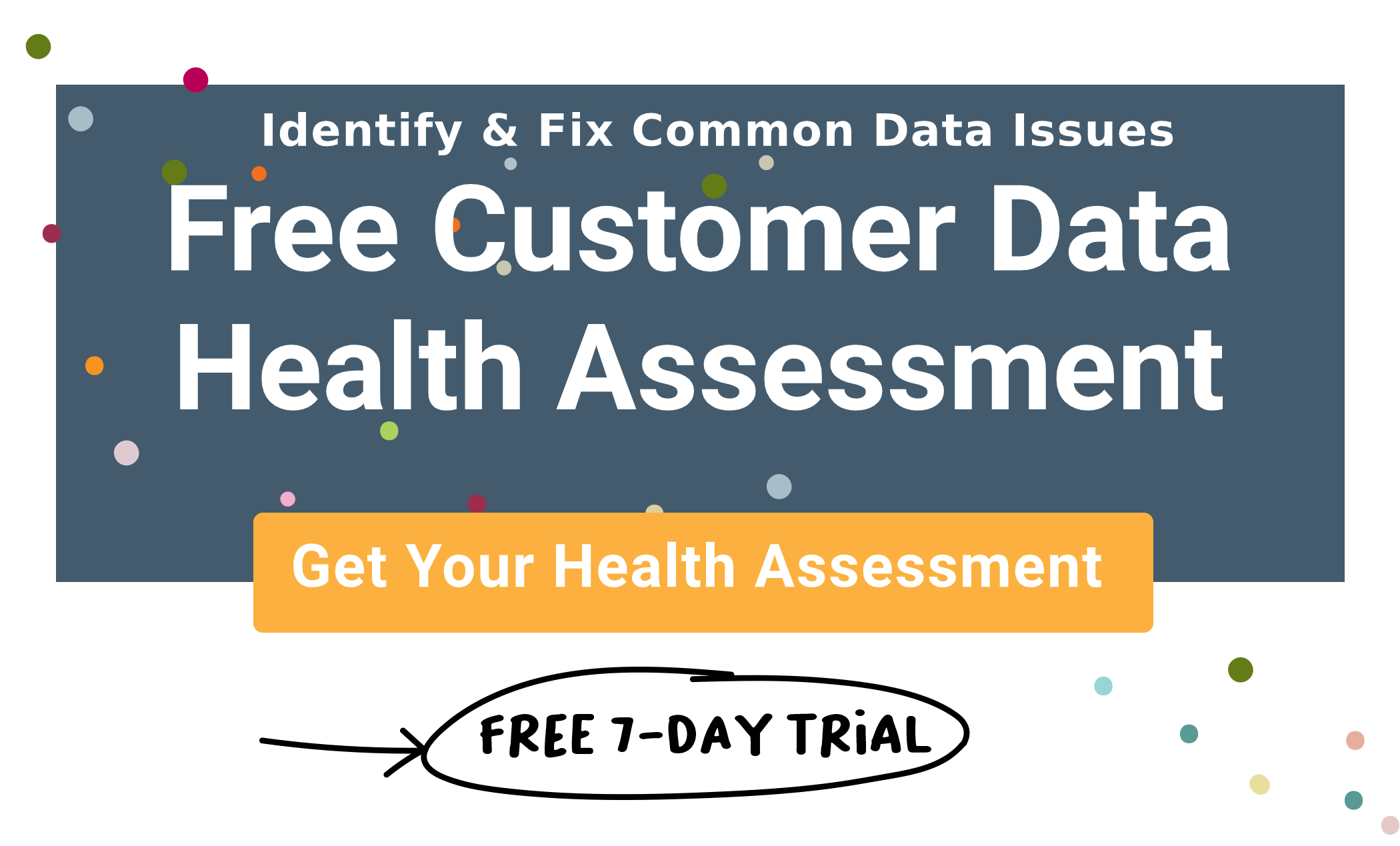Customer data is the core of every business. It dictates the way companies engage with customers and prospects. It plays a role across departments—marketing, sales, success, support—and ultimately defines your customers’ experiences with your brand.
However, simple data collection is not enough to improve customer engagement and experience. You must be able to actively use the data that you collect. But the problem is that raw data is just as the name implies: raw. It’s full of errors, typos, formatting issues, and other issues that become apparent once you dive into the dataset. How do you resolve all those data issues? The answer lies in data scrubbing.
What Is Data Scrubbing?
Data scrubbing, or data cleansing, refers to the process of preparing, processing, and cleaning your customer data for use in marketing campaigns, sales initiatives, or customer support and success.
Data scrubbing involves repairing, deleting, or normalizing data. The data scrubbing process typically follows a number of simple steps to identify and fix issues within a dataset.
In the end, the goal is to free your data from common errors that inhibit how it can be used and drive up costs. Some of the common data issues that are remedied in the data scrubbing process include:
- Duplicate data. Duplicate customer records break up the single customer view that is shared by all of your in-house teams. It is important that every customer has a single record so all your departments have the full context to guide their interactions with the customer.
- Inconsistent data. Ensure that all fields follow a consistent format. For instance, there are multiple ways to express a phone number in data: 1234567890 vs. 123-456-7890 vs. (123)456-7890. Having a singular format ensures that you won’t run into issues down the road and that the data can be used seamlessly with other software integrations.
- Redundant data. The data scrubbing process will help you to merge or remove redundant data to improve usability and minimize storage costs.
- General errors and typos in data. Whenever a human enters data manually, you can be sure that there are going to be some mistakes. Simple things, like a first name being in all-caps (JANE vs. Jane), break the veil of personalization and hinder your marketing automation campaigns.
These are just a few of the many different common data problems that data scrubbing can help you to remedy.
|
Related articles Declutter Your CRM By Purging Low-Quality Data Automatically 5 Steps for CRM Data Standardization Salesforce Duplicate Management: How to Automate Salesforce Deduplication |
Data Scrubbing vs. Data Cleaning vs. Data Cleansing
This is a question that we often get: “What are the differences between data scrubbing and data cleaning?”
These terms are used interchangeably, especially in the context of customer data. They have the same end goal—to clean up your data and ready it for long-term storage and use within your business.
Customer Data Quality Impacts Business Processes
The quality of your customer data reverberates throughout your business, impacting all teams that rely on the data and touching every facet of your business.
Low-quality data hinders marketing teams’ ability to create believably personalized campaigns. When your marketing teams have no faith in the quality of your customer data, they are likely to avoid injecting it into their messaging. This lowers conversion rates and ultimately harms relationships with customers.
Sales teams rely on accurate customer data to provide a context for the conversations that they have with prospects. If the data is unreliable (or split up between multiple duplicate records), it harms the team’s ability to speak directly to customers and address their biggest concerns. Low-quality data means lower sales.
Low-quality data makes it difficult for customer support teams to ensure that customers get the most out of your solutions. Being able to look through a record to discern what is important to each customer is an important part of providing a better experience. Customer success teams have the same requirements.
IT teams also spend a great deal of their time dealing with data issues. It is estimated that 50% of IT budgets go to data rehabilitation.
Additionally, when your database is full of low-quality, unscrubbed customer data, you end up storing more data, which inflates your costs and makes the data harder to search and utilize. It’s no wonder that Gartner estimates businesses miss out on $9.7 million on average due to bad data.
The 5 Steps for Clean Data
Scrubbing customer data typically involves a set of processes. As companies move through the phases of customer data management and gain a deeper understanding of their data issues, they will see productivity and effectiveness improve throughout their organization. Additionally, customers will enjoy improvements to their customer experience throughout the customer lifecycle.
Although each of these steps may be made up of many sub-steps, the standard process of data scrubbing includes:
- Audit and Inspect. To fix issues in your customer data, you have to be able to identify those issues. A data audit not only helps you to identify individual data problems, but also clues you into the overall health of your customer data.
- Data Scrubbing. Here you actively resolve the issues that you find in your audit. This can include fixing duplicate customer records, formatting issues and individual data errors; standardizing fields; and removing redundant data.
- Verification Of Data Cleanliness. Once you go through the process of data scrubbing, you then have to verify the cleanliness of your customer data. This is a secondary audit step that examines the results of the scrubbing process.
- Report. Reporting the results of your efforts is important for justifying the resource investment and tying data cleansing to real-world benefits and revenue gains.
- Create Automated Processes to Limit Data Issues. Determine why and how low-quality data was hitting your database in the first place. Do customer input fields need more validation? Do you need to train your internal teams about the importance of data quality and data cleansing? Do you need an automated process to cleanse data on an ongoing basis?
With a well-defined process in place for data scrubbing, employees can focus their time on other important tasks, rather than fixing mundane data issues.
A Comprehensive Customer Data Scrubbing Tool
Insycle is a comprehensive data scrubbing and data management solution. With Insycle, you can use our pre-built templates or create your own custom templates to fix your company’s specific customer data issues, then schedule those data cleaning templates to run on a daily, weekly, or monthly basis. Insycle delivers full data cleaning automation, cutting down on the time and headaches associated with cleaning your customer data.
With the right data scrubbing tools, you can completely change your business' relationship with data. Your data quality impacts every facet of your business over time.
Insycle’s Health Assessment, which is updated daily, audits and analyzes your customer data for more than 30 of the most common customer data issues. You’ll have a complete picture of the health of your customer data, which will help you determine where to begin with data cleansing.
You can also load your own customer data cleansing templates into the Health Assessment to track issues that are specific to your organization.

Want to see how healthy your customer data is today? Sign up and Insycle will begin generating your Customer Data Health Assessment automatically.
Fill out the form below to sign up today!






